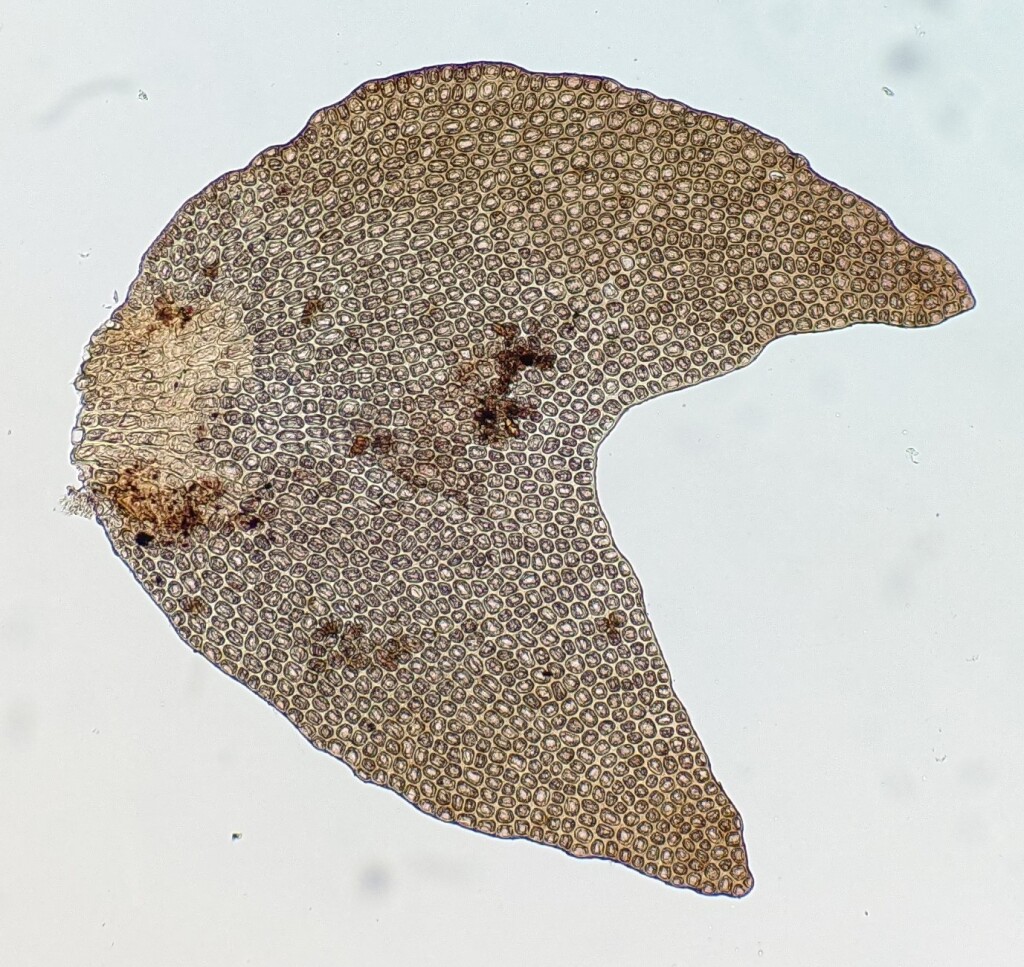Allisoniella nigra
(Rodway) R.M.Schust.Purplish or brown to olive-green, dioecious or autoicous (not in Victoria). Branches emerging from ventral stem and with a collar of tissue at base. Leaves bilobed 0.35–0.55 of total leaf length, sometimes less deeply divided (not in Victoria), quadrate, orbicular-quadrate or trapezoid in outline, 0.28–0.9 mm long, 0.3–0.85 mm wide, becoming larger toward stem apex, imbricate to contiguous, widely spreading, plane to reflexed along margins; lobes triangular acute to rounded, usually widely divergent, ±plane at sinus, squarrose to curved back toward stem. Leaf cells quadrate or rectangular to oblong, 10–38 µm long, 10–20 µm wide, thick-walled, without trigones, inconspicuously striate papillose, with 2–3 hyaline, finely papillose oil bodies. Bracts like vegetative leaves, abaxially sulcate, fused to each other and with unlobed bracteole. Perianth cylindric, c. 1.5–2 mm long, c. 0.7 mm wide, with 5 plicae extending entire length to apex, minutely denticulate at mouth.
GGr. Known in Victoria from damp banks of fast flowering streams in the Grampians. Also Tasmania and New Zealand.
Plants from New Zealand with shorter lobes or consistently rounded lobe apices have been recognised as a separate subspecies, subsp. novaezelandiae R.M.Schust. In New Zealand autoecious populations of subspecies nigra are recognised as the var. acutiloba J.J.Engel (Engel & Glenny 2008).
Engel, J.J. & Glenny, D. (2008). A Flora of the Liverworts and Hornworts of New Zealand, Vol. 1. Missouri Botanical Garden Press: St Louis, U.S.A.
 Spinning
Spinning